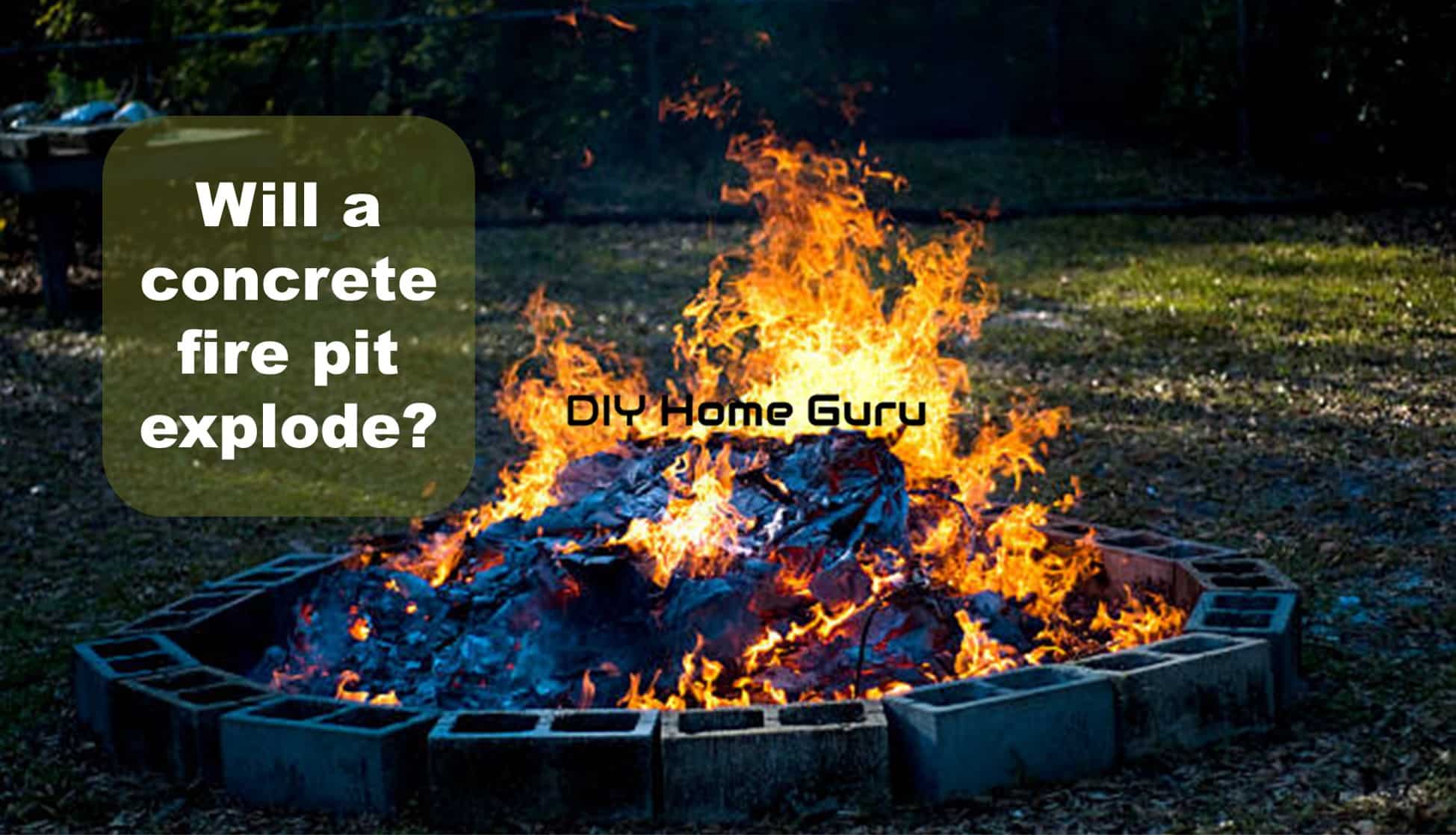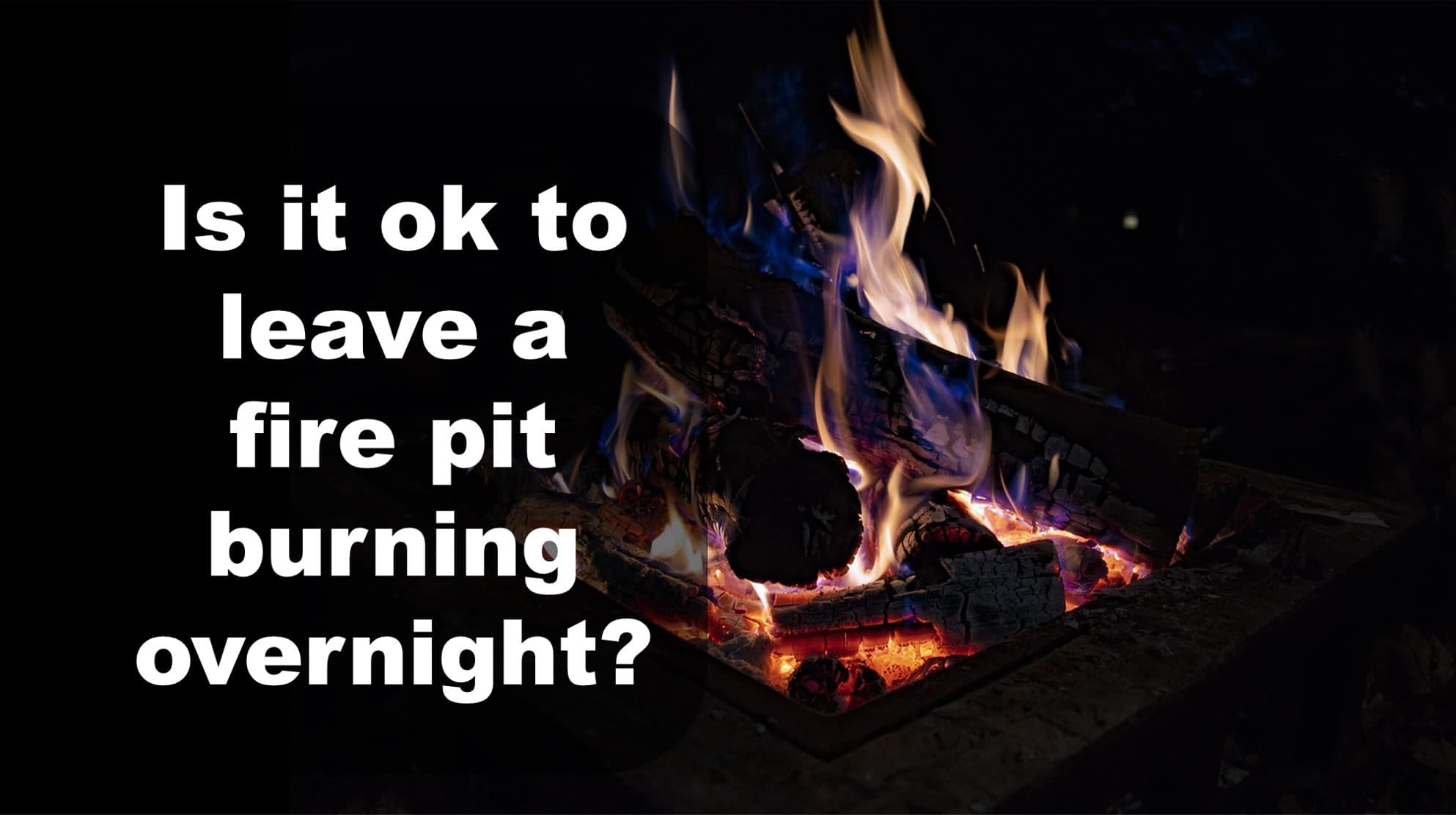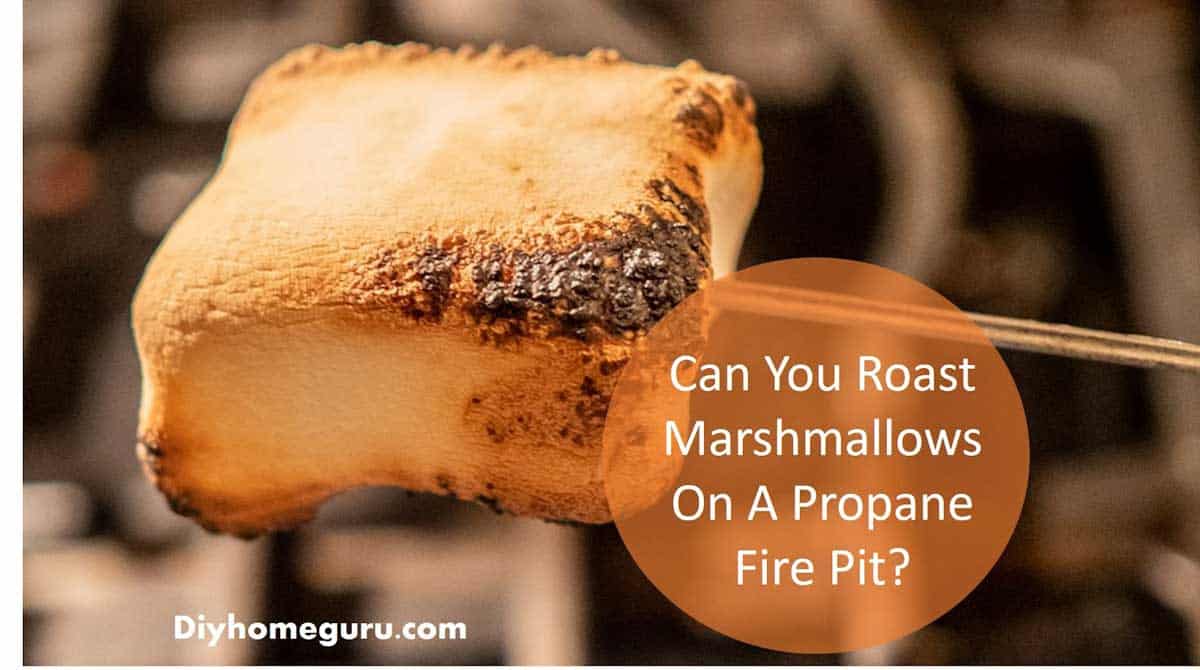Hey, Dan from bro builds showed you how he built his outdoor fire pit patio. He definitely made a few boneheaded mistakes during this build but luckily nothing he couldn’t fix along the way and the end result looks awesome.
Here’s how to build a fire pit patio with pavers from Dan’s perspective.
Draw the patio dimension on the ground
The day my patio kit arrived I spray painted an 11-foot diameter circle in my backyard where I wanted the patio to go. It felt a little small when I calculated the size of the fire pit in the middle. So, I ordered some extra pavers to enlarge the patio and spray painted a larger circle based on those new dimensions.
Remove the Top Layer of Sod
The circle’s final diameter was 12 and a half feet which I hoped would give me a couple inches of leeway once I started setting the pavers. Before I could do that, however, I had to dig up all the grass and a whole lot of dirt.
I knew I’d need at least four inches of gravel mix and one inch of sand for the base which means digging down about seven inches into the ground.
The top layer of sod came up pretty easily. As long as you’ve got a pointed shovel you can cut your way around a small section. Lever your shovel underneath and then pull the grass up like a strip of carpet
It’s not complicated but it is a decent workout and here’s a pro tip if you’re going to be digging up your lawn wear your lawn mowing shoes. Your shoes are going to get muddy.
Once all the sod was up there was still a lot more digging to do. I measured to see exactly how much further I had to go then got to work. Luckily ‘nephew bro’ showed up and made the work go a lot faster. Kid’s got great style but no lawn mowing shoes.
Within another hour or so we’d managed to shovel out all the dirt and rake it fairly smooth after tamping it down with a hand tamper.
Lay and tamp the gravel base
We could get to work laying our gravel base. Ryan showed up with his two wheeled wheelbarrow and we dumped a two-to-three-inch layer of gravel mix into the circle. It took about five wheelbarrows of the gravel mix to get that two-to-three-inch layer that we wanted to start.
Ryan started out tamping while I raked it smooth and then we switched off with the hand tamper each time one of us finished a circuit. With both of us trading off it didn’t take that long but it does lead me to bro tip number two. If you’re putting in a patio like this, do yourself a favor and rent a compactor from Home Depot or Lowe’s. It’s around 65 bucks for four hours and it’ll make the job so much easier.
After that first layer we shoveled, ranked, and tamped a second one. I checked to see if we needed a third and sure enough, we did. That third layer of gravel mix brought us to four inches though so we could finally move on to the next layer.
Lay the Sand layer on top
There needs to be about one inch of sand between the gravel and the pavers and the way that most people do this is to lay down some one-inch conduit to use as a guide. We also had some half-baked idea of using string tied to stakes but it ended up just being in the way and we scrapped it pretty quickly.
Now, here’s where we made our first mistake make sure your conduit has an outside diameter of one inch ours ended up being 1-3/8 outside diameter so we had to dig it into the ground a little bit but it still worked and as we dumped the sand into the circle.
It was easy enough to rake it out to approximately a one-inch depth. Then we used a long 2×4 to screw the sand flat from the center to both edges.
In hindsight we probably should have just filled up one end of the circle and worked our way from one side to the other so we didn’t have so much sand left over, but hey, we got the job done and it was easy enough to scoop the extra sand off with a flat bladed shovel. We’re bros not pros.
Lay the pavers in the required design
Since this was a circle patio kit we had to start right from the middle and work outward, one ring of pavers at a time and of course we couldn’t disturb the sand as we did so we laid out a temporary walkway across the pipes and measured from both sides of the circle to get the exact center.
Once I had the center paver in place we just followed the diagram included with the kit to lay out each piece in the correct order. There were only four different paver shapes other than the center paver, there was a thin wedge, a thick wedge, a rectangle, and a square.
I wasted some time hammering the first few pavers into the sand, since, as you’ll see in a minute, we ended up moving the pavers a lot more than we thought we would. But if you’re doing a patio yourself, you’ll generally want to hammer them in just to set them in place.
The first ring was super easy, the second one is where we started having a few issues but nothing major. First of all, the guide told us to leave, you know, 3/8 of an inch a half an inch even between the pavers. I didn’t want to do that because I thought it looked weird to leave such a big gap. So, I ended up putting them down a lot closer together than they really recommended.
In the end, this left me with some odd-shaped gaps for the final paver to fit into. I had to adjust the entire ring just a little bit to make sure that the last paver fit into its spot. With that done I hammered around the circle and made sure each of the pavers was firmly set into the sand. At this point, there was enough space to walk around on so I just stayed out on the center paver and let Ryan hand the pavers to me that brings me to tip number four.
It definitely helps to have an assistant hand you the pavers during this entire process, since, I was stuck in the center. It was really the only way to do it for these first several rows. It would have been awful to have to go back and forth between the wheelbarrow and try to set pavers in accurately.
While this part was tedious it was a nice change from digging and tamping. You just had to make sure you were spacing them enough so that you could fit all the pavers into the circle, but even if you did it wrong a little adjustment made it work. Once we got far enough, we had to remove the conduit from the sand so we could put the pavers over it. It was easy enough to fill in the conduit spot with a little more sand.
I kept staying out in the middle and Ryan kept handing me pavers. He also read the instructions. so, I knew which ones went where, with the last voids filled we got back to work putting down more pavers around the patio.
By the time we hit the ninth ring our brains were too tired to figure out the next pattern and we called a halt for the day. Unfortunately, around 8:30 that evening I realized the weather forecast called for rain all night long. so I ran out and put some plastic drop cloths over the whole thing.
The next morning there was a two-inch moat surrounding my half-finished patio. Luckily most of it stayed on top of the plastic and we were able to just roll the water off into the grass. We got back into the rhythm and laid the final three rows of pavers but here’s where my biggest mistake finally showed up. You see I’d been checking every single paver and trying to pick the best side to lay face up.
Unfortunately, I had forgotten that we ordered a stamp favor and it finally dawned on me that about ninety percent of the pavers I’d placed so far were upside down. I stood over it and eventually decided that if I was going to do this right we had to go back and flip them all over. I finished out the last ring of pavers for the kit and then Ryan and I got to work flipping over every single one of these pavers so that the stamped concrete side was face up rather than face down in the sand.
As you can see there’s a little more detail, it’s even easier to tell once you’ve turned a bunch of them over. Honestly, it only took another 20 minutes or so for us to fix the mistake so it was definitely the right choice.
The pavers looked so much better more like authentic cobblestones and it even seemed to bring out some of the colors in the stone too. With all our pavers right side up, we laid out the final ring around the outside. These were eight-inch-long pavers that we got separately from the kit.
They’re meant to make a sort of border around the outside finish everything off and just give us more space to sit as we hang out around the fire. That extra eight inches on either side of the patio gave us nearly a foot and a half more space and it looks awesome.
To help set the pavers more firmly in the sand we hammered most of them in with a rubber mallet. As I spot checked pavers for any wobble Ryan went around the circle and hammered in some black paver edging to hold everything in place.
We then dumped a bunch of sand onto the patio and pushed it across the pavers to fill in the cracks. Again, in hindsight we should have only used part of that sand there was just too much. We ended up shoveling it back off but at least we know we filled the cracks pretty well.
Spray the pavers with water
Spraying the patio with water help the sand to settle down into the cracks and provide more stability for each individual block. I honestly wasn’t sure if I liked the color of the sand next to the pavers so we decided to let it dry completely for a day or two before adding any more sand.
Building the fire pit
Placing the fire pit ring in the center of the patio helped us position the fire pit blocks which went up super-fast compared to the rest of the build. With only three layers this was the easiest part and I love how well these stones match the rest of the pavers on the ground.
We finished just in time for the rain to start falling the next morning I came out with a 2×4 and checked for any high or low spots in the patio. I kicked the 2×4 around the outside of the patio and anytime it spun like there was a high paver below it.
I hammered that paver deeper into the sand in order to make it flush with the ones on either side of it. It was a pretty good system and I’m not sure if there’s a better way to do this or not but by the time I got all the way around the fire pit the 2×4 was sliding pretty smoothly and evenly so I knew there weren’t any pavers sticking up too badly.
With that done I shoveled a little more sand onto the patio and followed the instructions of a local landscaping pro he told me to use the tamper to smash the sand down into the cracks between the pavers and really lock them all into place.
so, I broomed just enough sand to do one section at a time and then use the stamper to push the sand down into the cracks
Final thought
I learned my lesson from the day before and didn’t put too much sand on all at once. My goal was to not have to shovel a ton of sand back into the wheelbarrow at the end of the day. I ended up with just a little bit of sand left over on top of the patio and after brooming up the extra I sprayed off the patio one more time.
The nice thing is with all the sand between the pavers and the gravel underneath this patio drains really well after just a few minutes. It all soaked through and gone down into the ground.
I finished the fire pit off with a couple of these concrete caps made by a local concrete artist. They tinted them to a color we wanted, a light pewter and it matched the rest of the fire pit really well.
In the end, this patio build turned out awesome and the fire pit in the center is perfect. It’s big but there’s still plenty of room for everyone around it and it looks great. Don’t forget to hit subscribe on the original video and come back for our future projects.
We’ve got a ton more in the works including some all-weather Adirondack chairs, a pergola, a man shed, and a bunch of other fun stuff.
See you next time. Thanks for visiting DIYhomeGuru.com…





